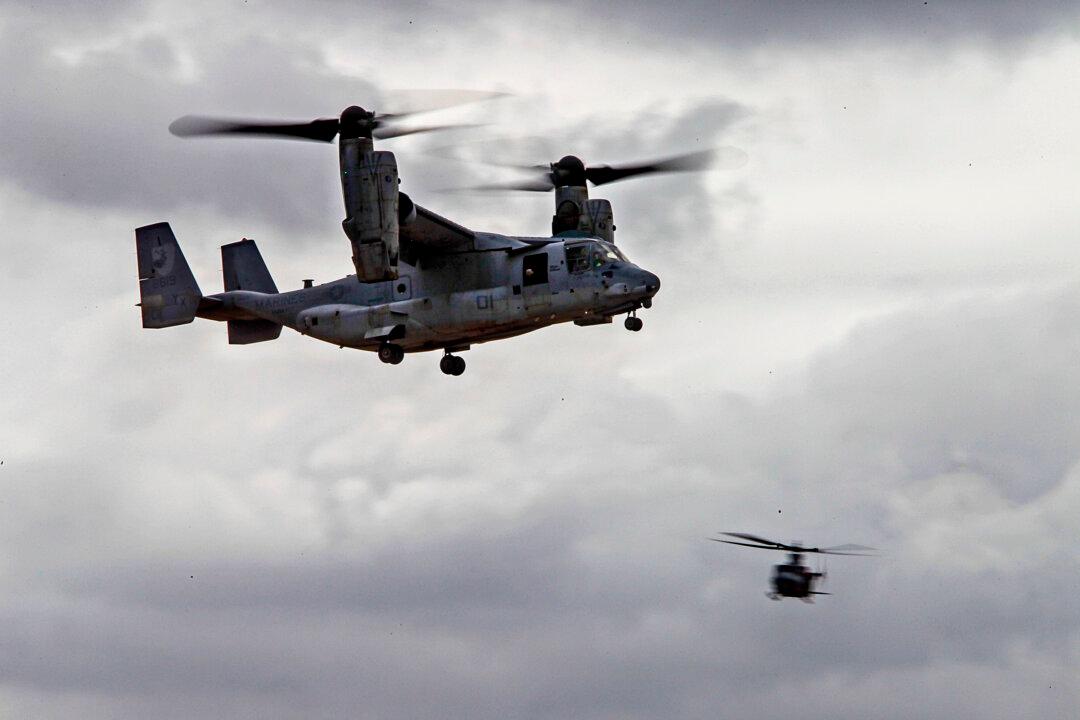The search for the bodies of three U.S. marines killed in the V-22 Osprey aircraft crash on Melville Island, 80 kilometres north of Darwin, continues three days after it crashed on Aug. 27.
An additional twenty U.S. marines also on the downed aircraft were transferred to Royal Darwin Hospital on Sunday, with eight remaining in hospital, five of whom are in critical condition.




